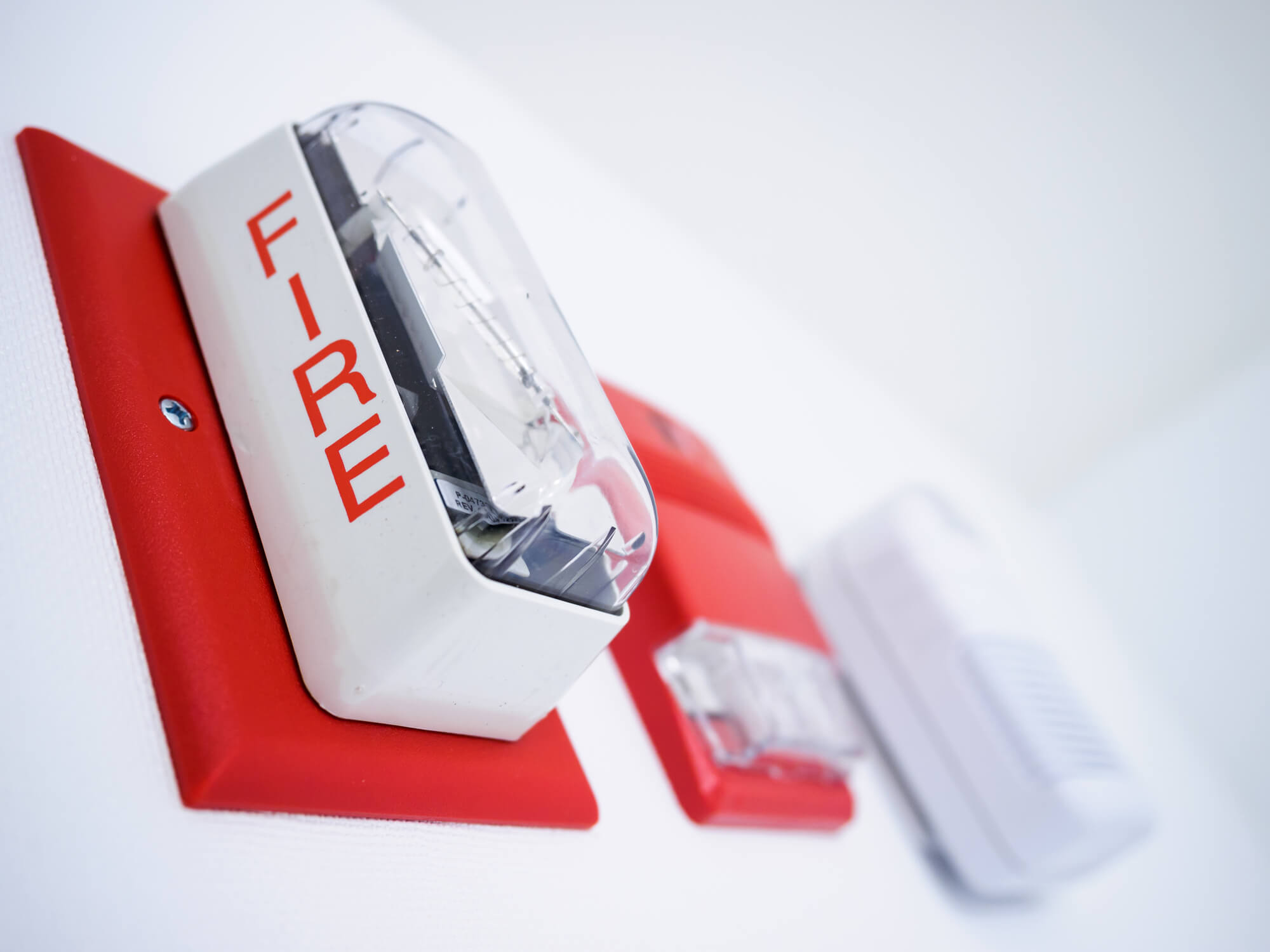December 31, 2025
Snow and Ice Management: Protecting Commercial Roofs and Building Exteriors from Winter Strain
Winter conditions like snow and ice create a very different operating environment for
Nobody wants to think about the possibility of a commercial fire – let alone commercial fire damage restoration. However, fires happen, and even the most prepared companies may fall victim to them. Commercial fires can significantly impact all elements of the business, including supplies, products, equipment, buildings, and people.
Although you hope it never happens to your business, you’ll want to be prepared. Knowing how to handle the aftermath of a commercial fire can get you and your employees on track to a fast recovery. We’ve pulled together the most critical steps you need to take to help you resume operations sooner rather than later.

The first thing you need to do after the flames are put out, and the water’s been removed is to report your loss to your insurance company. Unless you’re willing to run the risk of missing deadlines or experiencing delays in compensation based on what’s stated in your insurance policy, it’s best to make this call quickly.
Be ready to cover essential points, such as the extent of the fire and water damages and your expected losses. You’ll also need to discuss your insurer’s damage documentation requirements, the deadlines for proof of loss statements, and when they’ll send an adjuster to assess the damage to your property. It’s also best to discuss the possibility of written extensions and approvals.
Smoke odors can be dangerous even after the flames subside. When the fire department gives you the signal to re-enter your property, you’ll need to wear a breathing mask to prevent the smoke from getting into your lungs. Wearing gloves when handling the fragile remains of various fire-damaged surfaces prevents the oil from your hands from further compromising the affected areas.
A business fire affects wiring, plumbing, and utility lines, such as water pipes, gas lines, sewer lines, telephone lines, and cable lines. For this reason, you'll need to turn off your damaged property's electricity, gas, and water. You can contact city services if you have doubts about shutting everything down. They'll send certified technicians to check and confirm the integrity of each connection before turning the utility lines back on.
The intense heat of a fire may cause considerable damage to your building’s roof, exterior walls, and foundation. In addition, fire-fighting efforts can also leave floors, walls, and ceilings soaked. Since both scenarios can create a dangerous environment, you’ll want to bring in a certified professional to assess your commercial property’s structural safety both inside and out.
Moreover, fire-damaged properties are vulnerable to intruders and vandals who may slip inside through broken doors and windows. As the property owner, you're responsible for preventing unauthorized entry. It's also up to you to avoid further damage to the property after the fire. Do what you can to protect what's left by tarping your property, boarding up possible entry points, and installing emergency fencing. Your insurance policy might not pay for the additional damages if you neglect to do this.
The restoration crews will clean up and start the recovery process. These certified professionals will address potential hazards, including ruptured pipes, damaged wiring, unstable ceilings, drywall, subflooring, door frames, window frames, and other unstable interior and exterior materials.

It’s always prudent to hire a professional fire forensics team to conduct an arson investigation. These experts have the necessary skills and equipment to determine where the fire started and who or what caused it. They’ll give you the information you need for your claims process. If an individual started the fire, you could press charges to cover additional repair costs.
Once the on-site team ensures your safety, you’ll want to start a post-fire insurance inspection with the adjuster. Making a room-by-room loss assessment allows you to cover all areas and helps you outline your losses for the adjuster. Additionally, you’ll need to take note of fire-damaged inventory, furnishings, and equipment, including damages to security systems and fire protection.
You'll want the adjuster to see your post-fire losses' full extent. Consequently, it's best to avoid throwing away anything. Be sure to leave everything in place, find prospective restoration companies, and ask them about their salvage services. Commercial settings usually have many business-related items that can be recovered after a fire. These professionals use special techniques to save fire-damaged items, such as:
Unless you document the full extent of the damage, you won't be able to prove your claim. Completing a thorough review of the damage requires you to break up the task into manageable areas and track the recovery process from beginning to end. You should also record contractor estimates and proposed work schedules and document communication with your insurance provider. Be sure to take note of times, dates, and names.
Your accountant can help you create a business plan to help your business survive the weeks and months following a commercial fire. Besides discussing the expenses you need to keep up with during the restoration period, they’ll help you develop strategies for meeting your obligations.
Since cash flow might be a problem until your insurance claim is settled, requesting a cash advance against business interruption insurance allows you to meet the impending obligations. It's worth noting that the amount of the advance extended will be counted toward your coverage for a specific category. Moreover, you'll likely need to substantiate the amount with proof that you covered business expenses.

Since smoke damage can quickly escalate, you'll want to begin restoration and repair promptly. Otherwise, the soot and smoke will leave yellow stains on your walls and plastic items within minutes. Besides leaving permanent stains on metal surfaces within hours, acidity in soot will cause the yellowing on walls to become permanent within days. In addition, soot permeating building materials will release toxic fumes in the air and cause corrosion within weeks.
If you're looking for an experienced restoration company to manage these concerns effectively, look no further than BlueTeam. We're a U.S.-based service provider specializing in commercial restoration, construction, and roofing for domestic and international clients. Contact us today to request a demo or a quote.